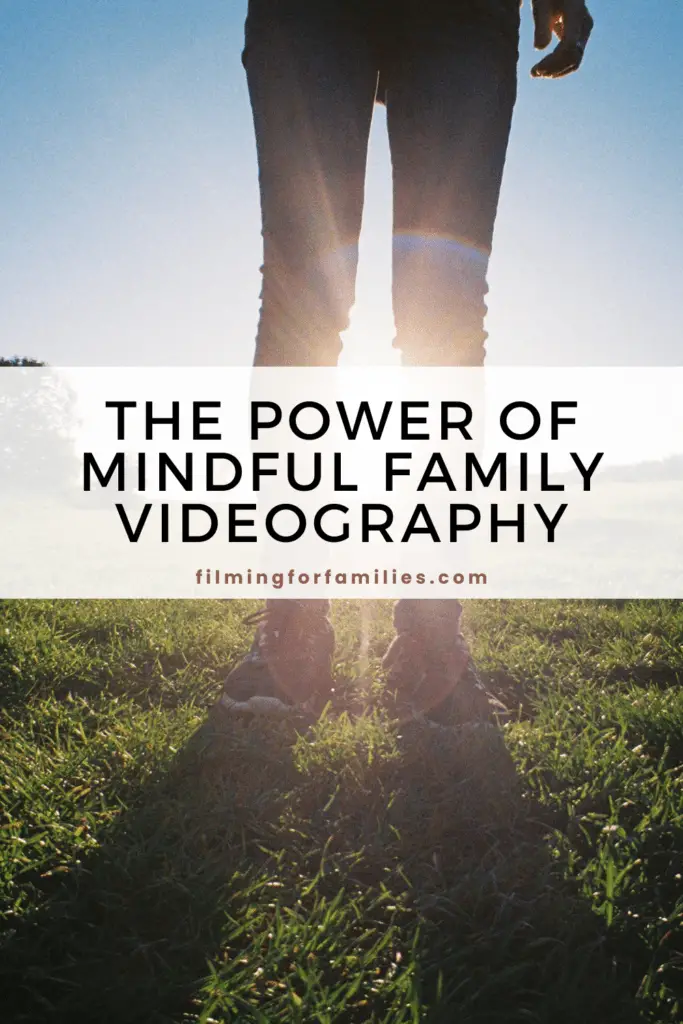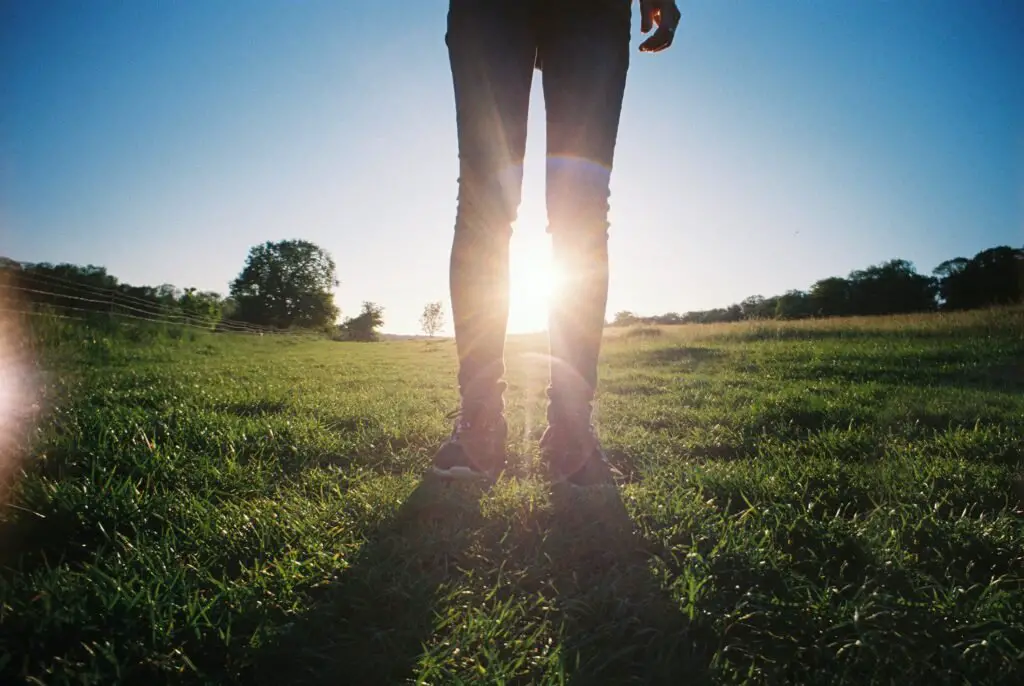Table of Contents
Introduction
Ever pressed ‘record’ on your camera during a family gathering and later thought, ‘Well, that’s a nice video… but it’s missing something?
You’re not alone.
It’s like having a beautifully baked cake without the cherry on top—looks good, tastes alright, but where’s the magic?
You’ve been there, right?
Hovering on the sidelines with your camera, trying to capture the laughter and the chaos, all the while feeling like an outsider in your own story. I get it. It’s like you’re there, but not really there.
It’s frustrating, isn’t it?
But what if I told you that the secret ingredient you’re missing isn’t about capturing more footage, but capturing with more heart?
Imagine turning every press of the record button into an opportunity to bottle up the essence of the moment, the unspoken bonds, and the raw emotions that make your family uniquely yours.
This, my friend, is the power of mindful family videography. It’s about being fully present, both behind and in front of the lens, and creating a treasure chest of memories that authentically represent the spirit of your family.”
So, if you’re ready to infuse your family videos with a little more soul and a lot more love, let’s dive into this journey together.
The Philosophy of Mindful Videography
Mindfulness isn’t just for meditation.
It’s a philosophy that can transform ordinary moments into extraordinary memories, especially when it comes to family videography. It’s about being present—truly present—in the moment. When you apply the principles of mindfulness to videography, you’re not just shooting videos; you’re capturing life as it unfolds, in all its beautiful, messy glory.
So, how does this philosophy translate to family videos?
It starts with intention. It’s the difference between mindlessly pressing the record button and purposefully choosing what to capture. Imagine a video of a family dinner.
Without mindfulness, you might capture generic shots: the table, the food, the family eating. But with mindfulness, you focus on the details and moments that tell a story—the warmth of a shared laugh, the fleeting expressions of joy, and the subtle dynamics of family interaction.
These moments, raw and genuine, are the essence of mindful videography.
And the emotional benefits? They’re profound.
By being present and mindful as you record, you’re not just an observer; you’re a participant. This engagement fosters a deeper connection with your loved ones, creating a sense of belonging and happiness.
Equipment and Setup for Intentional Capturing
When it comes to mindful videography, the gear you use might be different than what you’d expect. It’s not just about having the fanciest camera or the most sophisticated accessories. In fact, sometimes, the most unconventional tools can enhance the mindful videography experience the most.
Think about a smartphone with a decent camera. It’s unobtrusive, always at hand, and allows you to capture moments without the barrier of bulky equipment. The idea here isn’t to downgrade your gear but to pick tools that let you stay in the moment. You’re aiming for authenticity, not necessarily cinematic perfection.
Setting up for mindful capturing also takes a unique approach. It’s about creating an environment where genuine moments can unfold naturally. This might mean setting the scene in a way that’s comfortable and familiar to your family, rather than posed or forced. For instance, rather than asking your kids to pose for a holiday video, capture them as they naturally engage with the festivities—decorating the house, marveling at lights, or playfully wrapping gifts. This spontaneous approach not only feels more genuine but also invites a more profound emotional resonance.
Selecting the right equipment and setup is about striking a balance between quality and intimacy. Yes, you want your videos to look good, but not at the expense of missing the heart of the moment.
Techniques for Mindful Shooting
Mindful shooting is all about techniques that keep you, the videographer, and your subjects genuinely present. This approach can seem counterintuitive at first—aren’t we trying to capture moments, not influence them?
Yet, with the right techniques, you can ensure the authenticity of these moments while naturally integrating the act of videotaping into the experience.
- Stay in the Moment: This means being mentally present while filming. Instead of worrying about capturing everything, focus on what feels meaningful. Let’s say a child’s laughter during a quiet afternoon; instead of rushing to record, take a moment to observe. What makes this laugh so contagious? Is it their innocence, the setting, or something else? Capturing after observing ensures the heart of the moment isn’t lost.
- Engage, Don’t Just Observe: Interaction can be key to genuine moments. Engaging with your family members, making eye contact, or even participating before gently stepping back to capture the moment can lead to more natural and emotionally rich footage. It turns the camera into a participant rather than an intruder.
- Anticipate and React: Part of mindful shooting is anticipating moments before they fully unfold. This requires being deeply tuned into the environment and the dynamics of your family. By observing the lead-up to potentially meaningful interactions—like the quiet concentration before a surprise birthday cake is revealed—you can position yourself to capture the resulting expressions of surprise and joy without disrupting the moment.
- Capture the In-Betweens: Often, the moments between the ‘main events’ are where the magic happens. The quiet exchanges, the laughter shared while setting up for a photo, or the relaxed, candid moments when nobody thinks they’re being filmed. These in-betweens tell the story of your family’s genuine interactions, adding depth and richness to your videos.
- Use the Environment: Pay attention to the sights, sounds, and atmosphere. Is there a gentle breeze swaying the backyard hammock? Is the family dog excitedly wagging its tail during a holiday meal? Including these elements in your footage can deepen the sense of place and time, making the videos more immersive and emotionally resonant.
Employing these techniques requires a conscious shift from mere documentation to active, empathetic participation. It’s about merging the roles of observer and participant, capturing life as it unfolds while being an integral part of the moment themselves.
This mindful approach not only enriches the quality of the videos but also the experience of creating them, turning family into truly meaningful practice.
Storytelling Through Video
The power of storytelling in family videography can’t be overstated. More than just a series of clips, a video with a narrative heart captures the essence of your family’s unique journey, turning fleeting moments into timeless tales. Every family is a tapestry of stories, and mindful videography allows you to be the storyteller, weaving threads of memories into a cohesive narrative.
Start with a Theme
Begin by thinking about the story you want to tell. Is it a tale of growth, celebration, adventure, or perhaps everyday joy? Identifying a theme can guide your filming and editing process, ensuring each clip contributes to the overarching narrative.
Chronology Isn’t Always Key
While it might be tempting to sequence events in the order they occurred, consider arranging your footage based on emotional impact or thematic relevance. Jumping between moments can emphasize connections between different events, enriching the narrative.
Focus on Characters
Every family member has their role in the story. Highlighting individual personalities, from the quiet observer to the life-of-the-party, adds depth and relatability to your video. Capturing moments that showcase these unique traits reinforces the narrative, making the story distinctly yours.
Narrative Arc
Like any good story, your video should have a beginning, middle, and end. The beginning sets the scene, introducing the characters and the setting. The middle unfolds the events, building tension, joy, or excitement.
And the end brings closure, wrapping up the story in a way that resonates emotionally. Even in a short video, this structure helps guide the viewer through the experience, making each moment count.
For instance, consider a video documenting a family camping trip. The beginning might capture the preparation and anticipation, the middle the adventures and mishaps encountered along the way, and the end the reflective moments around the campfire, summarizing the journey.
This structure doesn’t just tell what happened; it conveys the emotional journey, the challenges overcome, and the bonds strengthened.
Incorporate Voiceovers and Music
Adding a voiceover can provide context, express inner thoughts, or thread together disparate clips. A family member narrating the video adds a personal touch that raw footage alone can’t achieve. Music, too, plays a pivotal role in storytelling. The right soundtrack can elevate emotions, highlight transitions, and underscore key moments, effectively shaping the viewer’s emotional response. Research into narrative psychology suggests that storytelling is a fundamental human strategy for making sense of the world around us.
Our brains are wired to respond to stories, which help us to organize and remember experiences more effectively. Studies show that stories not only enhance memory but also can significantly influence our emotions and decisions, a concept known as narrative transportation.
By leveraging storytelling techniques in your family videography, you’re tapping into this powerful psychological tool, enhancing the emotional impact and memorability of your videos.
Show, Don’t Tell
While voiceovers and music add layers to your narrative, the essence of storytelling through video lies in showing, not telling. Use visual cues to progress the narrative and convey emotions.
A lingering shot of an empty chair at a family gathering can speak volumes about absence or longing. Similarly, a quick succession of clips capturing laughter, high-fives, and playful chases can encapsulate the joy of family togetherness without a single word.
A good example is the “The Living Room Project,” where videographers filmed ordinary moments in family homes. In one video, a simple scene of a family preparing dinner together, layered with a grandmother’s voiceover recounting her childhood memories of similar family meals, transformed the footage into a poignant narrative about tradition, love, and the passing of time.
The art of storytelling through video is about capturing not just what happens but the emotions and significance behind those happenings. It’s the difference between a video diary and a narrative masterpiece that resonates with viewers on a deeper level. By incorporating these storytelling techniques into your family videography, you’re not just preserving memories; you’re crafting a legacy that captures the heart and soul of your family’s journey.
The Art of Editing with Purpose
The journey from raw footage to a compelling family video narrative is both an art and a science, with editing as its cornerstone. Editing with purpose is not about cutting and stitching clips at random; it’s a thoughtful process that aligns with the intention behind each captured moment.
This approach can transform your videos from simple recordings into emotionally resonant stories.
- Selective Highlighting: The first step is to review your footage critically and select moments that align with the story you’re telling. It’s tempting to include everything, but not every clip will serve your narrative. Focus on moments that evoke emotion, reveal character, or move the story forward. For instance, a clip of family members quietly engaging in their own activities highlights individuality within togetherness, a theme many find relatable.
- Pacing and Rhythm: Just like a well-composed song, your video should have a rhythm that keeps viewers engaged. Pacing is key. Too fast, and the emotional depth might be lost; too slow, and the narrative may drag. Experiment with the length of clips and transitions to find the sweet spot that complements your story’s flow. A series of rapid clips can build excitement for a climactic moment, while longer, lingering shots can deepen emotional impact, allowing viewers to fully immerse in the moment.
- Transitions as Storytellers: Transitions between clips are not just functional; they can be narrative tools. A fade transition might signify the passage of time or a shift in mood, while a cut can indicate a sharp change or highlight a contrast. Use transitions mindfully to enhance the storytelling, guiding the viewer through the emotional landscape of your video.
- Color Grading and Music: Editing also involves aesthetic choices that affect the video’s emotional tone. Color grading can warm up a scene to evoke nostalgia or cool it down for a somber moment. Similarly, the choice of music or ambient sound can dramatically alter the viewer’s emotional response. A cheerful tune can underscore a joyful family gathering, while a gentle instrumental piece might lend poignancy to quieter moments. These elements should complement the narrative, enriching the story without overpowering it.
Unexpected editing techniques, such as playing with speed (slow motion or time-lapse), using black and white for flashback scenes, or incorporating animated elements for humor or emphasis, can also bring out the essence of your footage.
For instance, a time-lapse of a day spent at the park captures the dynamic, ever-changing nature of family life, condensing hours of laughter, play, and rest into a few compelling seconds.
Also, consider using split screens or picture-in-picture effects to show simultaneous reactions or events, enhancing the storytelling by revealing different perspectives at the same moment. This technique can be particularly powerful in capturing the complexity and richness of family dynamics, showing, for instance, a child’s gleeful anticipation in one frame and parents’ loving gazes in another.
Sharing and Preserving Mindful Family Videos
Once your mindful family video is ready, sharing and preserving it becomes part of the narrative journey. This final step is about ensuring your videos not only reach your loved ones but also stand the test of time, becoming a legacy for future generations.
Creative Sharing
Beyond the usual social media posts, consider more intimate and creative ways to share these videos within your family.
- Organize a family movie night, where you premiere the latest video, fostering a sense of togetherness and creating new memories.
- Digital albums or custom USB drives decorated with family photos are thoughtful gifts, especially for family members who might not be tech-savvy.
- For family members far away, setting up a private family blog or YouTube channel can keep everyone connected, providing a space where new videos are eagerly anticipated and cherished.
Preserving for the Future
Digital preservation is paramount in ensuring that your videos remain accessible to future generations. Invest in high-quality backup solutions, such as cloud storage services, which offer the advantage of accessibility from anywhere, or dedicated external hard drives for a more physical backup option.
It’s also wise to keep multiple copies in different locations if possible, safeguarding against potential data loss from accidents or equipment failure.
Moreover, consider the formats of your videos. Technology evolves rapidly, and formats that are ubiquitous today may become obsolete tomorrow. Keep abreast of changes and be prepared to migrate your videos to new formats as necessary. This might sound tedious, but the effort ensures that decades from now, your family’s future generations can still experience these stories as vividly as if they were there.
Additionally, engaging in conversations about the stories behind these videos can add layers of meaning for future viewers. Recording or writing these narratives down, perhaps in a digital journal or a family website, preserves the context that might otherwise be lost over time. This way, the videos are not just moving images; they’re chapters in a broader family saga, enriched with insights, emotions, and reflections that provide a deeper understanding of the family’s history and values.
Lastly, in the spirit of mindfulness, periodically revisiting these videos with family can be a beautiful practice. It not only reinforces family bonds but also breathes new life into the memories, allowing for the continual appreciation of moments past and the anticipation of stories yet to unfold.
Final Thought
Now, it’s your turn. Dive into the world of family videography, armed with the knowledge and inspiration to capture those moments that truly matter. Share your stories, experiment with new techniques, and most importantly, stay present in the beautiful chaos that is family life.
Your journey into mindful family videography starts now. Explore, create, and cherish the art of capturing life’s fleeting moments with intention and love.
And if you’ve already started on this path, we’d love to hear from you. Share your experiences, your triumphs, and even your challenges. How has mindful videography changed the way you see and preserve family moments?
Your story could inspire others to start their own journey, turning everyday life into a beautifully captured legacy. Let’s keep the conversation going. Because in the end, it’s not just about making videos—it’s about making memories that last a lifetime.

If you enjoyed this article on intentional family videography, or think we left out anything important, please leave us a comment below! We would love to hear from you!



